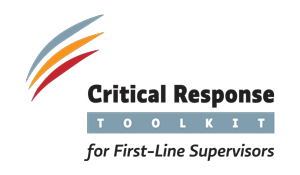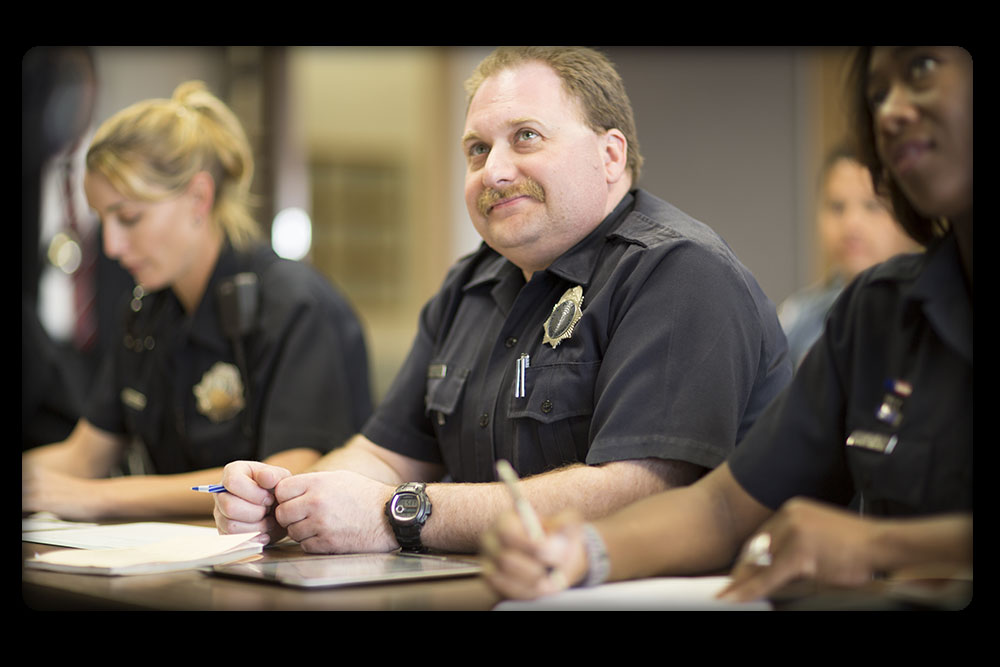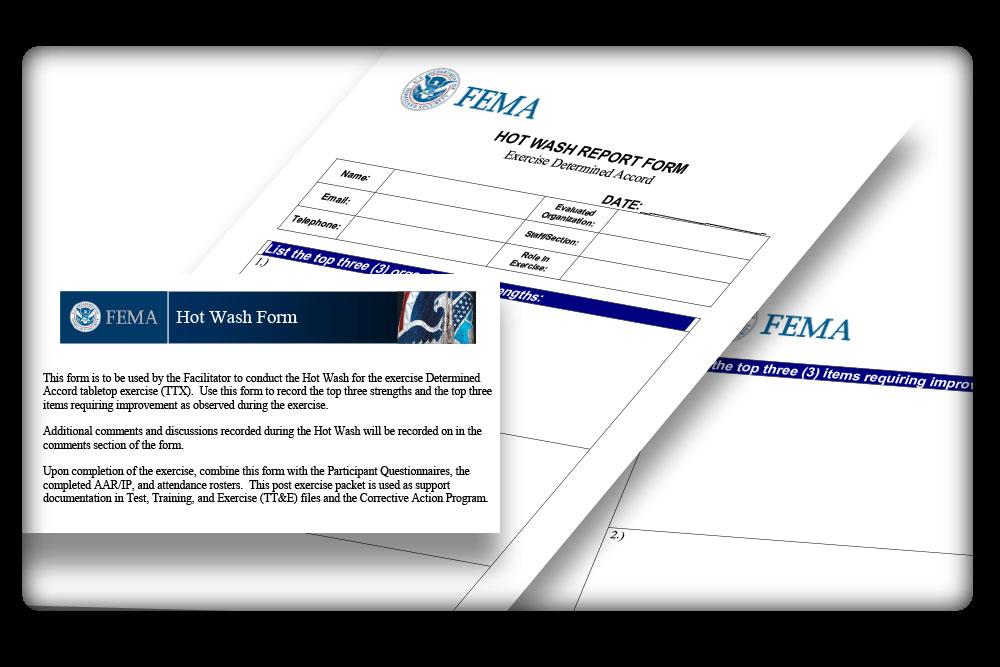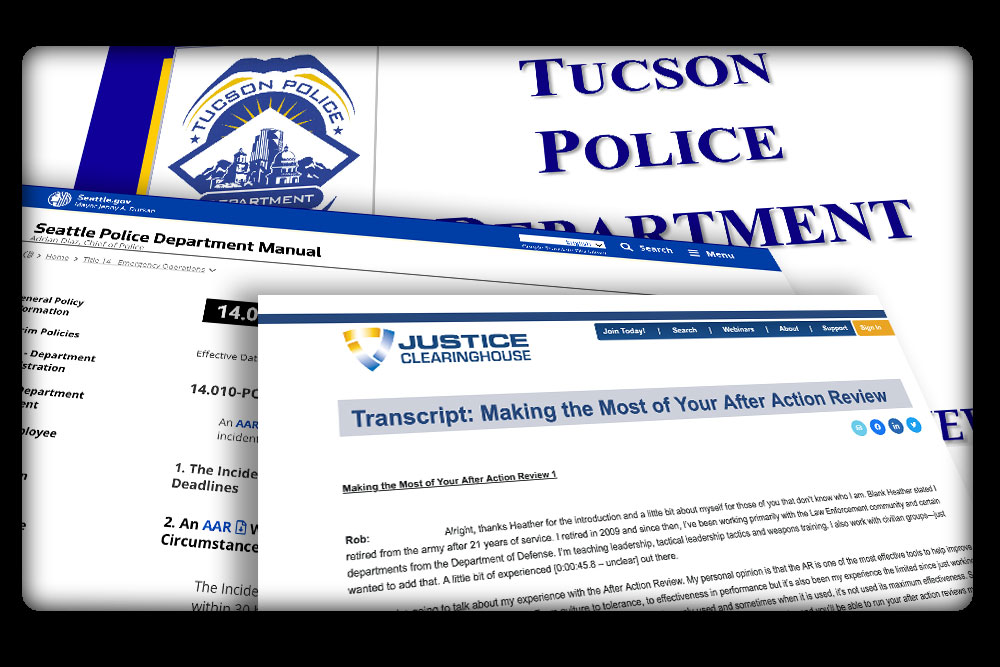|
![Post-Critical Incident [Header] Post-Critical Incident](/assets/images/CRTimages/post-incident_800.png) 
Just as training before a critical incident is critical, so is the act of debriefing after one. A critical incident is not over after the initial response ends. Assessing how the response went is essential for improving both individual and agency performance.
Three Key Action Items
There are three key aspects to a post-incident response:
- Debriefs
- After-action reports
- Officer wellness programs.
1. Debriefs
 Debriefs help identify what went right and wrong during the incident. Debriefs are a good opportunity to bring together everyone involved in the response, not just first-line supervisors (FLSs). However, debriefs are especially important to FLSs because they provide an opportunity for officers to comment on how the supervisors can better support or direct them during an incident. Debriefs help identify what went right and wrong during the incident. Debriefs are a good opportunity to bring together everyone involved in the response, not just first-line supervisors (FLSs). However, debriefs are especially important to FLSs because they provide an opportunity for officers to comment on how the supervisors can better support or direct them during an incident.
Ideally, there should be two types of debriefs conducted after a critical incident: a “hotwash” and a formal debrief.
-
An informal “hotwash” immediately following the incident is helpful in capturing feedback from everyone on scene, including responders from other agencies. A first-line supervisor can facilitate the hotwash and have another officer serve as a scribe to document the feedback. A hotwash focuses on immediate concerns, such as tactics, officer safety and wellness, and is good for gathering quick feedback for the agency. Taking the feedback back to the agency then allows for a more in-depth analysis of the incident.
-
A formal debrief may happen shortly after the incident and is a more organized process. These kinds of debriefs should also include the dispatcher(s) that handled the incident and can include other agencies or jail officials (if utilized). Whereas a hotwash is about immediate issues, formal debriefs are better suited to address longer term concerns of the agency, such as changes to training and protocols.
 Formatting a Debrief Formatting a Debrief
Regardless of the kind of debrief, a similar structure should be followed. Below is an example of how to format a debrief:
- The FLS and/or the first responding officer(s) should briefly describe the incident.
- This person should provide an overview of the incident and its objective, starting with the initial call for service and progressing through the response to the resolution. At this point in the process there is no analysis of the event, simply a list of facts about the response.
- Have all responding personnel briefly describe their role in the incident and what specific actions they took throughout the incident.
- Discuss the initial plan and include backup plans if Plan A did not work.
- Was Plan A effective?
- If yes, why? If no, why?
- The FLS and all personnel who were present should identify any issues they witnessed such as tactical concerns, internal and external communication errors, as well as deployment and assignment shortcomings.
- All present personnel should identify the key takeaways and lessons learned from the incident and establish future tactical improvements and policy considerations.
 Other Issues to Consider Other Issues to Consider
 Debriefs are meant to encourage open and honest conversation. Each participant should be prepared to admit to their shortcomings and accept constructive criticism from others, as appropriate. This setting usually does not occur organically, so supervisors must encourage an environment where participants feel comfortable and compelled to honestly share their feedback. If this environment is not established, debrief participants may be tempted to not acknowledge shortcomings or blame mistakes on other units or departments. Debriefs are meant to encourage open and honest conversation. Each participant should be prepared to admit to their shortcomings and accept constructive criticism from others, as appropriate. This setting usually does not occur organically, so supervisors must encourage an environment where participants feel comfortable and compelled to honestly share their feedback. If this environment is not established, debrief participants may be tempted to not acknowledge shortcomings or blame mistakes on other units or departments.
Supervisors must also be aware that the participants who could add the most constructive feedback may be people at the lowest ranks. FLSs should ensure that officers do not feel intimidated to speak up. Supervisors set the tone during the debrief process and need to make sure it is productive and constructive.
The debrief should also identify positive aspects of the response. The focus of conversation is not on calling people out, but on identifying ways to improve and tying each positive and negative action back to agency policy or training. No incident is without room for improvement.
Summary debriefs during roll call can be beneficial, especially for people who were not part of the response. All can learn from the incident. A first-line supervisor can comment on the facts of the incident and provide a summary of the feedback, prompting a larger conversation. This can lead to agency-wide improvements to trainings, policies, and procedures.
Summary of FLSs’ role in the initial debriefing process:
- Facilitate hotwashes and formal debriefs.
- Encourage participants to be open and honest.
- Provide critical feedback to team members.
- Provide feedback to other responding units or resources.
Helpful Resources:
If you would like to add a resource to this list, please contact PERF.
2. After-Action Reports
Following a debrief, it is beneficial to produce an after-action report (AAR) to share with the entire agency. An after-action report should discuss:
- What happened in the incident
- What the agency’s response was
- What went well in the response
- What needs to be improved
 The after-action report can help identify common trends in critical incident responses. If AARs reveal trends in policy violations or training shortcomings across several critical incidents, the documents should be used by policy and training personnel to make adjustments as needed. Areas to focus on include training, communication, policies, and procedures. Having a standardized after-action report form and an official policy on AARs will help formalize and standardize the process. The after-action report can help identify common trends in critical incident responses. If AARs reveal trends in policy violations or training shortcomings across several critical incidents, the documents should be used by policy and training personnel to make adjustments as needed. Areas to focus on include training, communication, policies, and procedures. Having a standardized after-action report form and an official policy on AARs will help formalize and standardize the process.
The after-action report is not to be used for disciplinary action or to blame certain personnel for the outcome of the incident. Although individual actions and decision-making will be considered, the goal of the AAR is to identify and address shortcomings in the agency. Once an after-action report is written, it should be disseminated internally for all agency personnel to learn from.
Exactly who is responsible for drafting the AAR will depend on the agency. In some cases, the on-scene FLS may be called upon to put together the report, especially if they served as the Incident Commander. Even if they are not responsible for drafting the AAR, first-line supervisors still play a critical role in assembling information and and providing input to the AAR team.

Learning from Other Agencies
Helpful Resources:
If you would like to add a resource to this list, please contact PERF.
3. Officer Wellness Programs
 Critical incidents can be traumatic events for responding personnel. Law enforcement agencies need to evaluate their officer wellness programs and ensure they are providing their personnel with the necessary resources after a critical incident. Critical incidents can be traumatic events for responding personnel. Law enforcement agencies need to evaluate their officer wellness programs and ensure they are providing their personnel with the necessary resources after a critical incident.
First-line supervisors play an important role in officer wellness. FLSs should monitor their officers for signs of depression or other mental health issues, especially after a traumatic critical incident. If a supervisor perceives one of their officers is depressed or at-risk for suicide, they should:
- Check-in with that officer and ask them how they are doing.
- Monitor sick leave – depression, substance abuse, and other issues will appear here first.
- Watch for at-risk behaviors, such as alcohol abuse (hungover at work, weight gain or loss, consistent sleepiness), withdrawing from activities, isolating themselves from friends or family, or giving away possessions. A reduction in exercise or quitting a beloved hobby can also be warning signs.
- Look for noticeable changes in their mood such as an increase in anxiety and irritability.
- Encourage the officer to visit your agency’s Employee Assistance Program, Peer Support Unit, or other resources your agency provides.
For an additional list of warning signs please consult this list.
Different agencies have different resources; FLSs should be aware of what is available in their agency and be trained on how to address wellness issues with their officers. FLSs should also recognize that some officers may feel more comfortable talking with professionals who are familiar with law enforcement.
Key elements of an Officer Wellness Program in the aftermath of a critical incident can include the following:
- An Employee Assistance Program (EAP)
- A Peer Support Program
- A relationship with a Critical Incident Stress Management group
Helpful Resources:
If you would like to add a resource to this list, please contact PERF.
This project was supported, in whole or in part, by cooperative agreement number 2018CKWXK016 awarded to the Police Executive Research Forum by the U.S. Department of Justice, Office of Community Oriented Policing Services. The opinions contained herein are those of the author(s) or contributor(s) and do not necessarily represent the official position or policies of the U.S. Department of Justice.
|

![Post-Critical Incident [Header] Post-Critical Incident](/assets/images/CRTimages/post-incident_800.png)

 Debriefs help identify what went right and wrong during the incident. Debriefs are a good opportunity to bring together everyone involved in the response, not just first-line supervisors (FLSs). However, debriefs are especially important to FLSs because they provide an opportunity for officers to comment on how the supervisors can better support or direct them during an incident.
Debriefs help identify what went right and wrong during the incident. Debriefs are a good opportunity to bring together everyone involved in the response, not just first-line supervisors (FLSs). However, debriefs are especially important to FLSs because they provide an opportunity for officers to comment on how the supervisors can better support or direct them during an incident.  Formatting a Debrief
Formatting a Debrief Debriefs are meant to encourage open and honest conversation. Each participant should be prepared to admit to their shortcomings and accept constructive criticism from others, as appropriate. This setting usually does not occur organically, so supervisors must encourage an environment where participants feel comfortable and compelled to honestly share their feedback. If this environment is not established, debrief participants may be tempted to not acknowledge shortcomings or blame mistakes on other units or departments.
Debriefs are meant to encourage open and honest conversation. Each participant should be prepared to admit to their shortcomings and accept constructive criticism from others, as appropriate. This setting usually does not occur organically, so supervisors must encourage an environment where participants feel comfortable and compelled to honestly share their feedback. If this environment is not established, debrief participants may be tempted to not acknowledge shortcomings or blame mistakes on other units or departments.  The after-action report can help identify common trends in critical incident responses. If AARs reveal trends in policy violations or training shortcomings across several critical incidents, the documents should be used by policy and training personnel to make adjustments as needed. Areas to focus on include training, communication, policies, and procedures. Having a standardized after-action report form and an official policy on AARs will help formalize and standardize the process.
The after-action report can help identify common trends in critical incident responses. If AARs reveal trends in policy violations or training shortcomings across several critical incidents, the documents should be used by policy and training personnel to make adjustments as needed. Areas to focus on include training, communication, policies, and procedures. Having a standardized after-action report form and an official policy on AARs will help formalize and standardize the process. 
 Critical incidents can be traumatic events for responding personnel. Law enforcement agencies need to evaluate their officer wellness programs and ensure they are providing their personnel with the necessary resources after a critical incident.
Critical incidents can be traumatic events for responding personnel. Law enforcement agencies need to evaluate their officer wellness programs and ensure they are providing their personnel with the necessary resources after a critical incident. 
![Managing a Critical Incident Managing a Critical Incident [section header]](/assets/images/CRTimages/managingincident_sh.png)

![Go to the Helpful Resources section Helpful Resources [section header]](/assets/images/CRTimages/helpfulresources_sh.jpg)